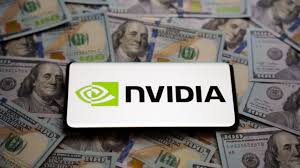Digital Marketing Strategy

Digital Marketing Strategy

1.Introduction to digital marketing strategy
Business firms are dealing with an ever-changing world of digital technology in 2025. Business firms have to change their marketing strategy to survive. An effective digital marketing strategy is business-goal aligned, leverages emerging technologies, and meets the evolving customer needs.
2. Understanding Digital Marketing Strategy
A digital marketing Strategy plan is a written plan of how an organization is going to realize its marketing objectives using the internet-based channels like search engines, social media, e-mail, and websites. It includes the knowledge of target audience, establishing specific targets, and choosing the right digital tools and channels.
3. Key Elements of a Digital Marketing Strategy
- Market Research: Industry and consumer trend awareness.
- Goal Setting: Establishing clear, quantifiable goals.
- Audience Segmentation: Target customer identification and categorization.
- Channel Selection: Best digital channels choice.
- Content Planning: Creation of useful and applicable content.
- Performance Metrics: Selection of KPIs to monitor success.
4. Creating SMART Goals
Goals must be
:
- Specific: Write down precisely what you want to accomplish.
- Measurable: Make your goals quantifiable so that you can measure progress.
- Achievable: Make the goals achievable in terms of resources.
- Relevant: Coordinate business goals as a whole.
- Time-bound: Set deadlines to keep focus.

5. Identifying Target Audience
The audience is the most critical to understand. Create in-depth buyer personas using demographic information, psychographic information, online activity, and purchasing behavior. Google Analytics, social media analytics, can offer such information.
6. Competitive Analysis
Research the competition to determine strength, weaknesses, opportunities, and threats. Use tools like SEMrush or Ahrefs to scan their digital environment, keyword strategy, and backlink profile.
7. Choosing Digital Channels
Choose channels based on where your target audience spends their time:
- Search Engines: For intent-based searches.
- Social Media: For brand awareness and interaction.
- Email: For one-on-one communication.
- Websites/Blogs: For content sharing and SEO.
8. Content Marketing Strategy
- Content is the soul of digital marketing strategy.
- Create a content calendar with: Blog Posts: Educate and inform your audience.
- Infographics: Data visualization.
- Ebooks/Whitepapers: Detailed resources.
Videos/Webinars: Engage and explain complex topics.
Optimize content to be SEO-friendly and focused on various phases of the buyer’s journey.

9. Search Engine Optimization (SEO)
Improve your website’s search engine ranking:
- On-Page SEO: Improve titles, meta descriptions, and content.
- Off-Page SEO: Acquire quality backlinks.
- Technical SEO: Improve site speed, mobile-friendliness, and crawlability.
Stay updated on algorithm updates and best practices.
10. Pay-Per-Click Advertising (PPC)
PPC campaigns can generate traffic in real-time:
- Google Ads: Target relevant keywords.
- Social Media Ads: Target behavior and interests.
- Retargeting: Re-target non-converting visitors once more.
Track ROI and reallocate bids and targeting.
11. Social Media Marketing
Establish brand presence and interact with your audience:
- Platform Choice: Select platforms your audience will like.
- Content Plan: Mix value and promotion content.
- Community Management: Reply to messages and comments in a timely manner.
Optimize through analytics.
12. Email Marketing
Keep in contact with your audience directly:
- List Growth: Grow your subscriber list using lead magnets.
- Segmentation: Address messages to user behavior.
- Automation: Automate lead nurturing and onboarding through drip campaigns.
Comply with data privacy laws.
13. Influencer Marketing
Partner with influencers to reach more people:
- Find Relevant Influencers: Choose those that share your brand values.
- Set Definite Goals: Determine what you want to do.
- Track Impact: Monitor engagement and conversions through campaigns.
Establish long-term partnerships for ongoing value.

14. Affiliate Marketing
Sell your products through third parties:
- Program Setup: Establish commission rates and policies.
- Sign Up Affiliates: Find partners with the same audiences.
- Monitor Performance: Monitor with tools and measure performance.
Give transparency and support to affiliates.
15. Video Marketing
Use visual media to interact with customers:
- Platform Use: Utilize YouTube, TikTok, and Instagram Reels.
- Content Diversity: Tutorials, reviews, and behind-the-scenes.
- Optimization: Add captions, tags, and authoritative thumbnails.
Monitor viewer retention and engagement metrics.
16. Mobile Marketing
Optimize for mobile users:
- Responsive Design: Make websites accessible on any device.
- SMS Campaigns: Send message at the right moment and with the right context.
- App Marketing: Engage and optimize user experience in mobile apps.
Consider location-based marketing for location-based offers.
17. Marketing Automation
Automate marketing processes:
- Email Automation: Automate on the basis of user interaction.
- CRM Integration: Coordinate sales and marketing activities.
- Lead Scoring: Mark leads on the basis of activity.
Platform like HubSpot and Marketo can help automate.
18. Data Analysis and Performance Monitoring
Monitor and track performance:
- Key Metrics: Track traffic, conversion, and ROI.
- Tools: Utilize Google Analytics, SEMrush, and social media metrics.
- Reporting: Monitor and change gears according to performance.
Data-driven decisions.
19. Budgeting and Resource Allocation
Optimal resource allocation:
- Budgeting: Spend based on channel performance.
- Resource Allocation: Tool and train the teams.
- Cost-Benefit Analysis: Track return on investment per effort.
Review and redo allocations from time to time.
20.Stay updated with trends
The digital landscape is dynamic:
Continuous Learning: Learn from webinars, read industry blog posts, and go to workshops.
Networking: Meet industry leaders and visionaries.
Experimentation: Experiment with new platforms and methods.
Flexibility is the key to long-term success.
21.Common mistakes to avoid in digital marketing strategy
- No Goals in Mind: Plans never take off without goals.
- Mobile Users Overlooked: Most view content on phones.
- SEO Not Taken into Account: Organic search remains the biggest traffic source.
- Analytics Overlooked: Numbers tell us what to focus on.
- Mismatched Branding: Congregation of messages builds trust.
Finding pitfalls is at the heart of winning strategy development.

22.Case studies
Case Study 1: E-commerce Brand Drives Sales A digital marketer for an e-store used a strong digital marketing strategy with focus on SEO, PPC, and email marketing. In six months, they recorded a 40% increase in organic traffic and a 25% rise in sales.
Case Study 2: B2B Company Boosts Lead Generation A B2B business used LinkedIn advertising and content marketing to establish thought leadership in their industry. By doing so, they generated a 60% rise in quality leads within one year digital marketing strategy.
23.Conclusion
A successful digital marketing strategy campaign in 2025 needs a balanced approach through multiple channels and constant updates to new technology innovation and consumer behavior. With the right goals, knowledge of your customers, and the right tools, businesses will experience tremendous growth and lead the pack in the busy online market.







